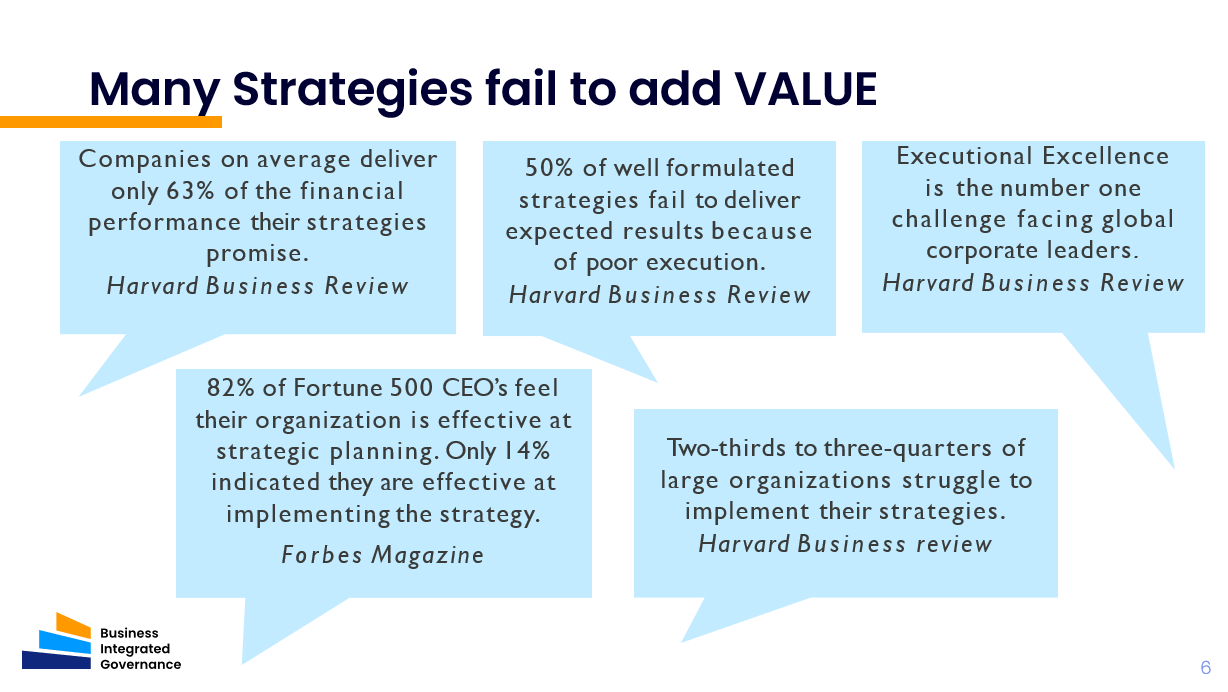
GO BIG Launch Event – Summary
May 10, 2024
Connecting Strategy to Delivery with Viva Goals and BIG
May 21, 2024On the 8th May, the GO BIG Network supported the Business Integrated Governance (BIG) CIC in presenting an overview of BIG, with several perspectives. The event is summarised here.
The first part of the presentation covers the Challenges of Strategy Delivery - and includes a specific Strategy Perspective. It is available on YouTube here.
Article prepared by:
David Booth, FStratPS – author, Strategy Journeys - a guide to effective strategic planning
David Dunning – lead author, Business Integrated Governance
The presentation discusses the challenges of delivering strategies within organizations, whether they are not-for-profit, government departments, or commercial entities. It emphasizes the need for a clear alignment between the business purpose and the strategies of various departments and projects. The goal is to track progress and improve performance, ultimately maximizing value.
However, strategy delivery is complex and often fails due to poor execution. David Dunning identified several challenges, including:
- Clarity of Strategy: The presentation underscores the importance of having a well-defined strategy that is directly linked to the organization’s overarching purpose. A clear strategy serves as a roadmap, guiding departments and projects towards common goals. However, formulating such a strategy is only the first step; it must also be communicated effectively throughout the organization to ensure everyone understands their role in achieving the objectives.
- Communication and Accountability: Effective strategy delivery hinges on robust communication channels that allow for the cascading of strategic goals and the collection of feedback from various levels within the organization. This two-way communication ensures that the strategy remains relevant and adaptable. Additionally, accountability is crucial—individuals and teams must understand their responsibilities and be empowered to take ownership of their contributions to the strategy.
- Agility and Integration: The dynamic nature of business requires organizations to be agile, ready to pivot in response to new opportunities or threats without derailing ongoing projects or strategic initiatives. This agility must be balanced with the need for integration, ensuring that all parts of the organization are working in harmony towards shared objectives.

David Booth developed this further:
- Dynamic Strategy Management: The presentation advocates for a view of strategy as a living entity within the organization, not a static document. It should evolve with the organization, adapting to changes in the internal and external environment. This dynamic approach requires continuous monitoring, review, and adjustment of the strategy.
- Leadership and Culture: Leadership plays a pivotal role in energizing the organization and embedding the strategy into the corporate culture. Leaders must inspire and engage their teams, fostering an environment where the strategy is not just understood but lived by every member of the organization.
- Holistic and Tailored Approach: Finally, the presentation suggests that a successful strategy considers both the exciting prospects of change projects and the routine of day-to-day operations. It should be holistic, encompassing all aspects of the organization. Moreover, there is no one-size-fits-all solution; each organization must develop a strategy that aligns with its unique culture, context, and capabilities.
Audience Comment - “Strategy - especially new areas to be addressed - often compete with the day to day ongoing business. How much energy is spent on each is usually not defined.”
In essence, the presentation calls for a shift in how organizations approach strategy—from a static plan to a dynamic, integrated, and living part of the organization that requires continual attention, communication, and leadership to thrive.
In conclusion, each organization is unique and requires a tailored approach to strategy. The key is to develop strategic capabilities, embrace a continual approach to improvement, and foster a culture of learning and openness. This philosophy is crucial for organizations to effectively embrace and advance their strategies.


